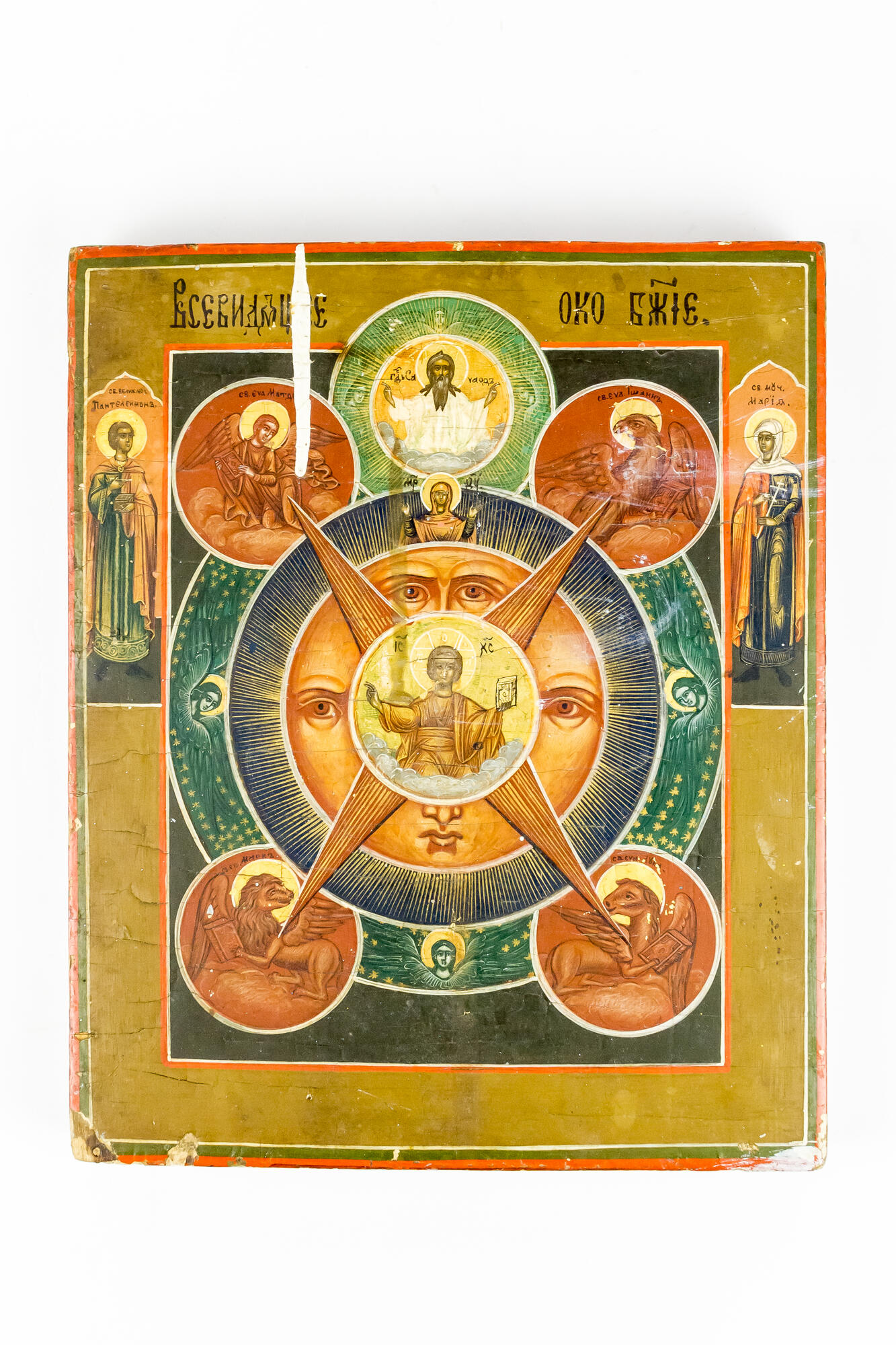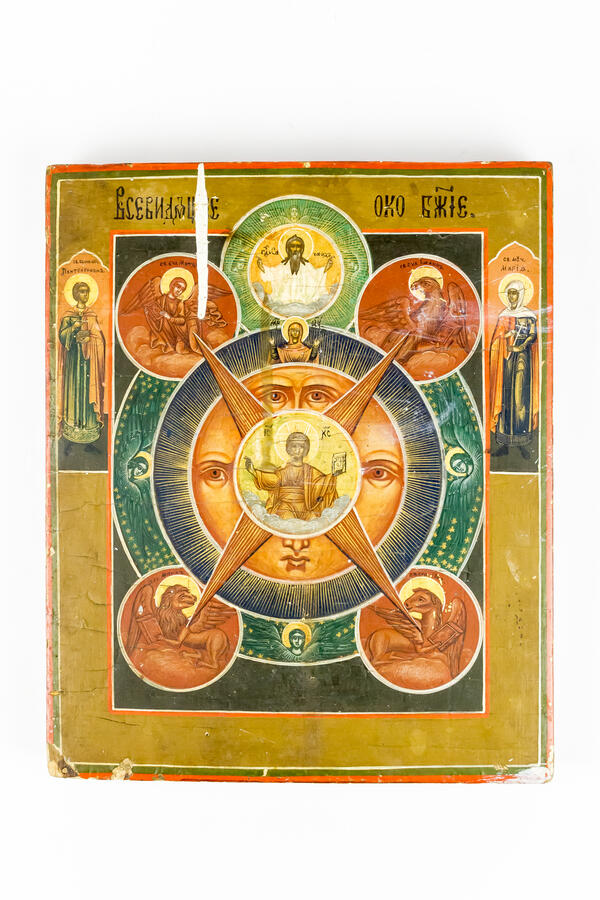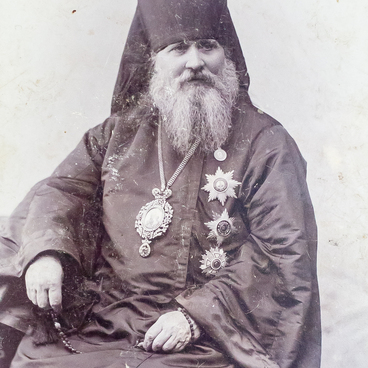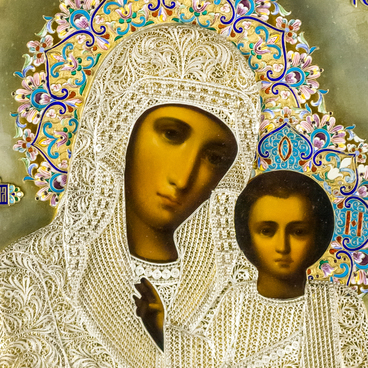The space of the icon is filled with a geometric composition with a repeating circle motif. In the center, it is customary to place the smallest circle with the figure of Jesus Christ depicted as the Savior Emmanuel — that is, in His adolescence. In icon painting, this image illustrated the idea that Christ came into the world to save humankind and to call all people into the Kingdom of God. It is expecially emphasized. The name Emmanuel means “God is with us.”
In the second circle, the icon painter featured a face with two pairs of eyes, a mouth and a nose. These are two pairs of the All-Seeing Eye: God the Father and God the Son.
Four rays mean the light that comes to the world from the Savior. At the ends of the rays are the symbols of the four evangelists: Matthew is an angel (man), Mark is a lion, Luke is a calf, John is an eagle.
There are different interpretations of these images. The most popular ones say that the image of an angel (or a man) corresponds to Saint Matthew, because in the Gospel of Matthew a special role is given to the earthly life of Christ, it tells about His incarnation as a man and the holy mission of salvation. The sign of the lion reminds of the power and royal dignity of Christ. Saint Luke is associated with the calf, emphasizing the sacrificial mission of the Savior. The eagle, on the other hand, informs about the height of the Gospel teaching or about the Ascension of the Lord.
At the top of the composition is a separate circle depicting God the Father of hosts, surrounded by the halo of the divine light and three six-winged Seraphim. He blesses the entire creation with both hands.
The icon from the museum collection was created in the late 19th — early 20th century. The artist used traditional methods of icon painting: he painted with tempera (egg paint) on a wooden board covered with gesso (“levkas”) — a special primer based on chalk mixed with animal or fish glue with the addition of linseed oil.



